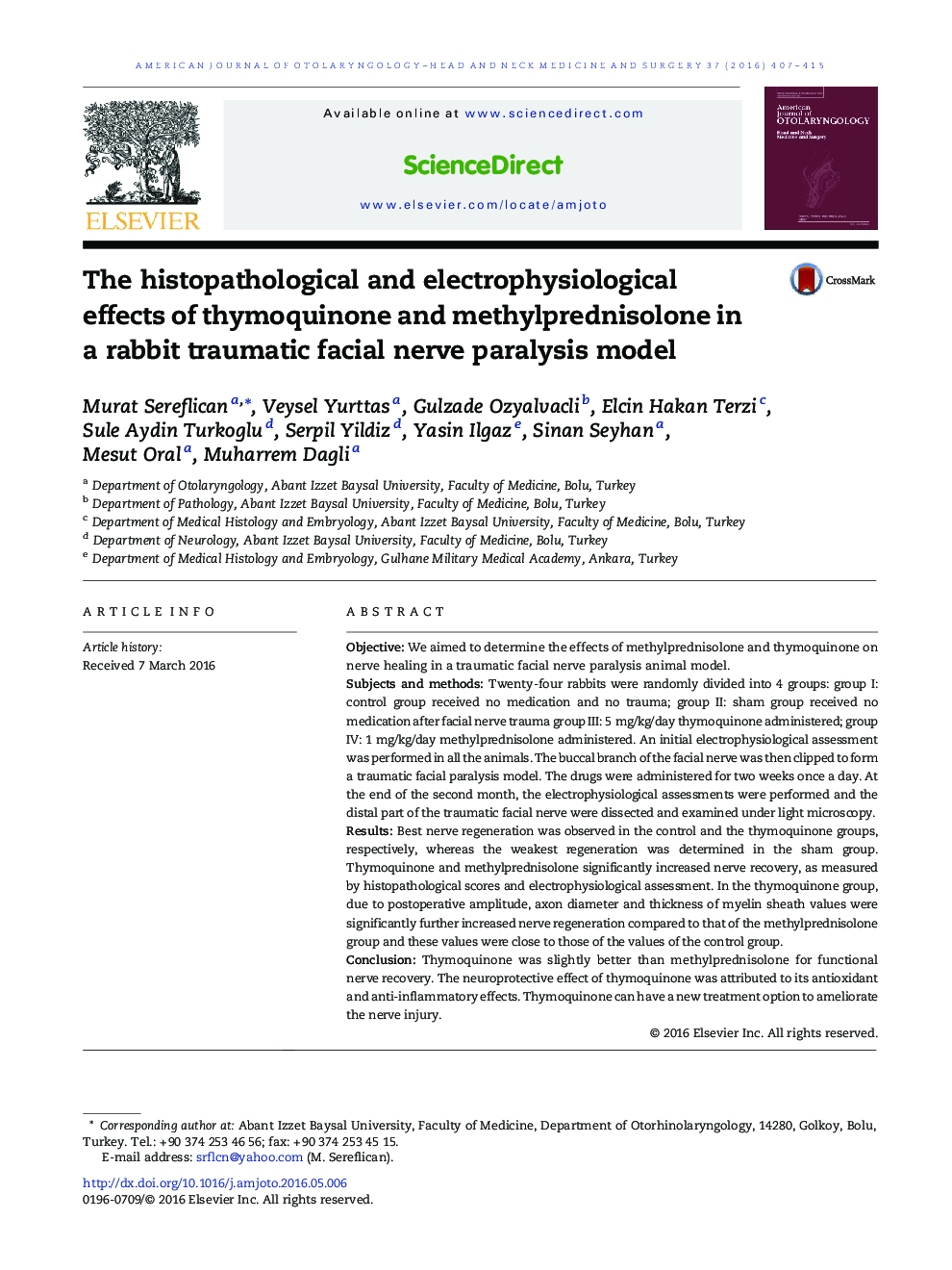| Article ID | Journal | Published Year | Pages | File Type |
|---|---|---|---|---|
| 4102890 | American Journal of Otolaryngology | 2016 | 9 Pages |
ObjectiveWe aimed to determine the effects of methylprednisolone and thymoquinone on nerve healing in a traumatic facial nerve paralysis animal model.Subjects and methodsTwenty-four rabbits were randomly divided into 4 groups: group I: control group received no medication and no trauma; group II: sham group received no medication after facial nerve trauma group III: 5 mg/kg/day thymoquinone administered; group IV: 1 mg/kg/day methylprednisolone administered. An initial electrophysiological assessment was performed in all the animals. The buccal branch of the facial nerve was then clipped to form a traumatic facial paralysis model. The drugs were administered for two weeks once a day. At the end of the second month, the electrophysiological assessments were performed and the distal part of the traumatic facial nerve were dissected and examined under light microscopy.ResultsBest nerve regeneration was observed in the control and the thymoquinone groups, respectively, whereas the weakest regeneration was determined in the sham group. Thymoquinone and methylprednisolone significantly increased nerve recovery, as measured by histopathological scores and electrophysiological assessment. In the thymoquinone group, due to postoperative amplitude, axon diameter and thickness of myelin sheath values were significantly further increased nerve regeneration compared to that of the methylprednisolone group and these values were close to those of the values of the control group.ConclusionThymoquinone was slightly better than methylprednisolone for functional nerve recovery. The neuroprotective effect of thymoquinone was attributed to its antioxidant and anti-inflammatory effects. Thymoquinone can have a new treatment option to ameliorate the nerve injury.
